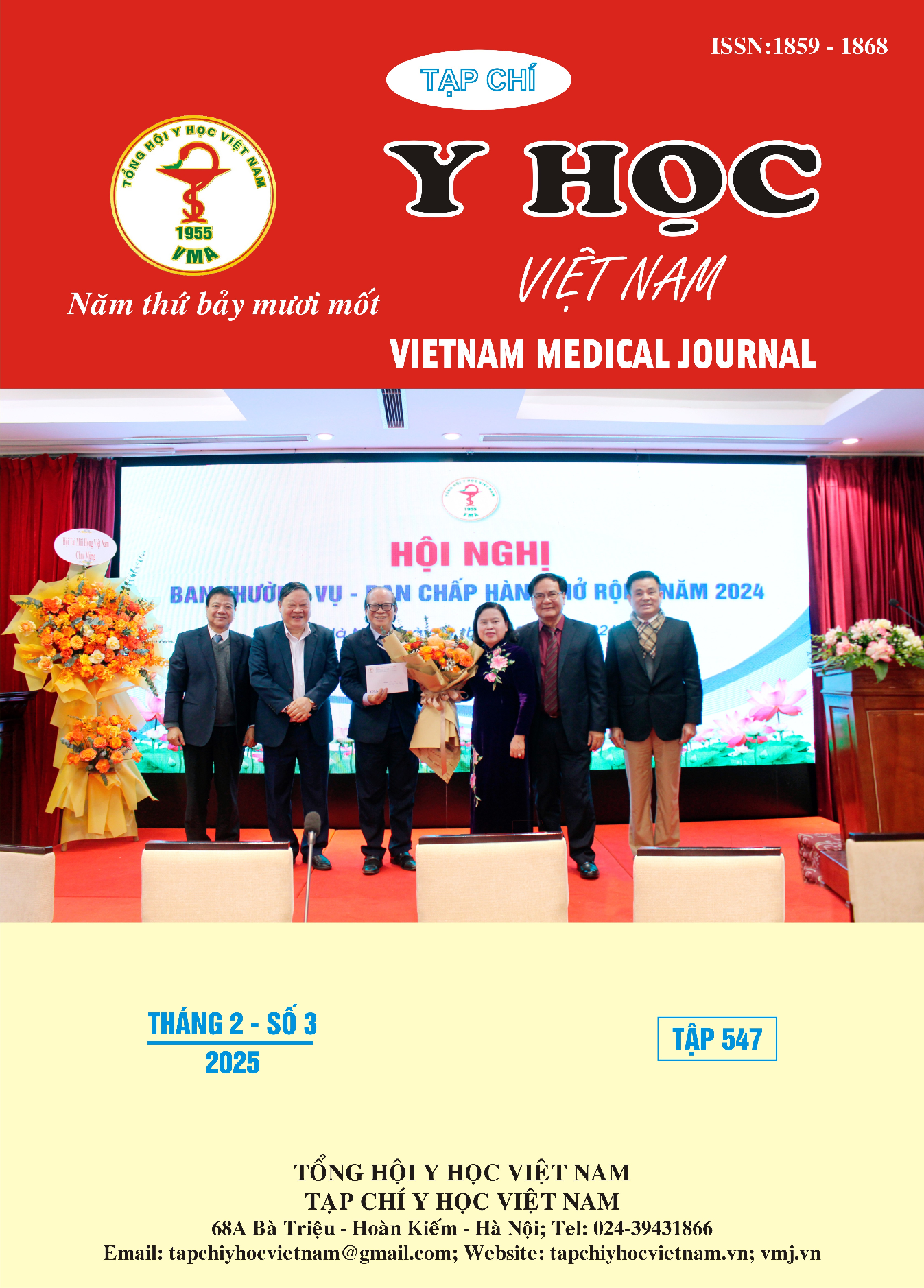DEPRESSION, ANXIETY, STRESS OF PATIENTS WITH CHRONIC RENAL FAILURE AT THE DEPARTMENT OF NEPHROLOGY - UROLOGY - ENDOCRINE, NAM DINH GENERAL HOSPITAL IN 2023
Main Article Content
Abstract
Objective: To describe the current situation of depression, anxiety, stress of patients with chronic renal failure at the Department of Nephrology - Urology - Endocrinology, Nam Dinh General Hospital in 2023. Research subjects and methods: Cross-sectional descriptive study was conducted with 145 patients from May 1, 2023 to June 30, 2023. Results: The study subjects were aged from 45 to 60, accounting for the highest proportion of 50.34%. 70% of the subjects were retired or not working. Nearly 50% of the subjects had an income of less than 5 million/month. 72.41% of the subjects had another disease besides chronic kidney failure. The ratio of anxiety, depression, and stress in patients with chronic kidney failure was very high, at 65.51%; 56.55% and 51.72%, respectively. Of which, about 35% of the subjects had severe and very severe depression, 43.15% of the subjects had severe and very severe anxiety, and 26.67% of the subjects had severe and very severe stress. Conclusion: The study showed that a high proportion of subjects with chronic kidney failure had symptoms of anxiety, depression, and stress. Nurses in particular and health workers in general need to provide health education and counseling so that patients can feel secure in their treatment and cooperate during the treatment and care process at the hospital. Hospitals and social organizations need to coordinate and mobilize resources to increase the level of social support for patients, especially patients with chronic kidney failure.
Article Details
Keywords
anxiety, depression, stress, chronic kidney failure
References
2. Ngô Huy Hoàng, Lê Thị Huyền (2016). Chất lượng cuộc sống của người bệnh suy thận mạn điều trị tại Bệnh viện Hữu nghị Việt Nam - Cu Ba Đồng Hới năm 2016, Tạp chí Khoa học Điều dưỡng 1(2), trang 58-65.
3. Nguyễn Danh Lâm và cộng sự (2022). Thực trạng nguy cơ Stress, lo âu, trầm cảm của học sinh trung học phổ thông huyện Yên Định, Thanh Hoa, Tạp chí Y học Việt Nam, tập 516 tháng 7, số 1, trang 67 -70.
4. Ngụy Lê Phương Thảo (2024). Đánh giá thực trạng rối loạn giấc ngủ, trầm cảm và lo âu ở người bệnh đau vai mạn tính, Tạp chí Y học Việt Nam, tập 534 tháng 1, số 1B, trang 155 -159.
5. Vũ Minh Tuấn và cộng sự (2024). Thực trạng lo âu, trầm cảm của người bệnh ung thư vú tại Khoa Nội 5 Bệnh viện K cơ sở Tân Triều Hà Nội, Tạp chí Khoa học Điều dưỡng, 7(3), trang 86-92.
6. Vũ Hồng Vân (2021). Tỉ lệ bị rối loạn lo âu, trầm cảm ở bệnh nhân Đau thắt mạn tính do thoái hóa cột sống, Tạp chí Y học Việt Nam, tập 505 tháng 8, số 1, trang 43 -45.
7. Nguyễn Thị Quỳnh Vân (2019). Tình trạng lo âu, trầm cảm, chất lượng cuộc sống và một số yếu tố liên quan của người bệnh Suy thận mạn lọc máu chu kỳ tại Khoa Thận nhân tạo Bệnh viện Bạch Mai. Luận văn thạc sĩ Điều dưỡng, Trường Đại học Thăng Long.


